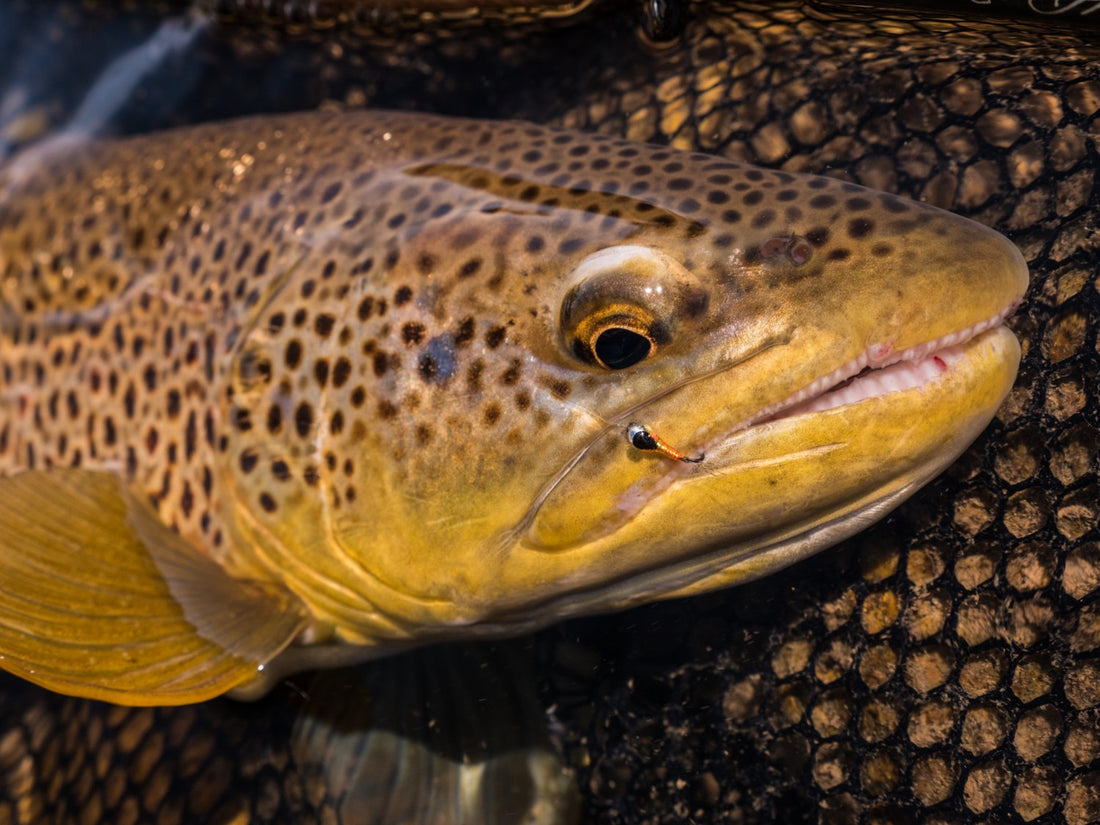
Summertime tip: don't forget the riffles.
Share
Before I started fishing competitively (and Euro nymphing more specifically), I often passed by most of the riffles I came across. The simple fact of the matter was that when indicator nymphing it usually required a significant reduction in the weight and the distance between my strike indicator and split shot in order to fish riffles with any effectiveness. Most of the time I was unwilling to make that change so unless I happened to be fishing a dry fly, riffles usually got past by. Why should I have cared anyway? I was so used to finding concentrations of fish in deeper slower water during the colder months where my indicator rig fished more effectively, that I didn't understand how many fish inhabited riffles during the warmer months when their metabolisms fired up and the food became larger and more abundant.
A couple of experiences changed this view near the beginning of my competitive career. The first experience came in 2006 while I was fishing with a newly treasured client Wenert Trich and his friend Rita Rose, who was also a guide. We were fishing a small southern Colorado stream that had a high density of brown trout. I had rigged our dry dropper rigs to target deeper runs and pools and we covered lots of water to find these water types. However, Rita stopped to fish a riffle that had a noticeably steep gradient. I told her that fish wouldn't be holding there. She told me she thought I was wrong and then proceeded to catch a couple of fish to prove her point. Even more surprising, when we waded through the riffle I watched 10 or more trout spook out of the swift current that wasn't even a foot deep. I swallowed my slice of hubris dissolving humble pie.
Later that year I volunteered for my first electrofishing survey. Luckily, the biologists I was with put in block nets at the top and bottom of the reach (fish must be contained within a reach for statistical estimates) but they didn't walk through the middle of the reach to do it. This left the fish throughout the reach unaware of our presence and we were able to observe where they were holding within the river as we fished our way upstream. What I saw startled me. We were in a stretch of river that has a high density of brown trout and they were materializing to the anode (a phenomenon called taxis) we ended up capturing just over 430 brown trout in about 430 feet of stream. There was a fish per linear foot of river! More revealing than the density of fish however was how many of them were in shallow riffled water that I considered featureless and not worth fishing. I realized that I had been passing by a large percentage of fish in that river in pursuit of the more obvious holding water.
At this point I knew I had a problem but I wasn't really sure how to fix it. I didn't have a rig that I felt would fish this water well as the competition legal dry dropper rigs that I had been fishing at the time were rigged to approximate the strike indicator nymphing rigs that I was used to from my prior fishing. I've since learned how to adjust dry dropper rigs to better fish these water types (a future post) but at the time my dry and droppers were too far apart so I couldn't fit dry and dropper into tight short riffles. As a result, dry and dropper often fought each other during the drift with both flies fishing below their potential. Furthermore, my leader didn't allow me to high stick my leader off of the water without sagging the rig back toward me. This problem was soon to change when my Fly Fishing Team USA mate Lance Egan invited me along for the H-Creek experiment in August of 2007; which we talked about in the introduction to our film Modern Nymphing. I quickly realized that long leader European nymphing techniques were well suited to fishing riffles either with a floated sighter fished upstream or by holding the sighter off of the water using an up and across strategy, especially when maintaining a low profile so as not to spook trout in the shallow water.
If you still are a bit skeptical about whether you should target riffles on your local water, let me provide an example of why you are missing out with a case study example from one of my days on the water earlier this week. I was fishing a river with a low to moderate population of trout (occupation of riffles usually increases with density of trout in the stream) but a reputation for nice browns. When I arrived at the river where the access trail brought me to it, there was a wide open section of stream with riffles on the river left side sliding into a slightly deeper run on the river right side. However, the spot wasn't an obvious fish magnet and there were more desirable looking runs and pools up and downstream. I try not to pass up water since I often come across poor beats in competitions so I set up and went to work. I was glad I did because I ended up catching ten fish from the stretch and several outsized brown trout.

The stretch of water I fished near the access. Most of the fish came in the water in the background of the photo.

A brown from the tailout of the access point run.
Though I caught fish in several places along the stretch, let me highlight one specific spot that most anglers would likely pass up. I was fishing at the bottom of the run at the access point. I picked up half a dozen fish in the tailout (photo above), the center of the run, and along an eddy seam on the far bank which I felt good about given how open and somewhat featureless the run was. When I turned to move my way upstream, there were two deeper swifter short and narrow runs on the river right bank (see photo). I eventually caught fish out of the second upstream one after covering several spots along the way.

One of the spots I fished was a slight depression I could see in the shallow riffle on the river left side of the stream. There was a color change with lighter colored rocks arcing around a darker colored depression (see diagram above). The depth change was slight but I thought it might be enough to slow the current and hold a small trout. I made one cast to the depression with my flies landing at the lip of the depth change. I held most of my sighter off of the water and expected to make a couple of short drifts and then move on. To my happy surprise, my rig had not drifted a foot before it stopped dead and a lovely brown trout exploded from the water with five continuous tail walking jumps; which I've found is common for fish caught in riffles because they have no deep refuge to escape to. After a spirited fight, I cradled a brown trout about 19" long in the net, that had taken a butano Lite Brite Perdigon, before slipping it back to its hydrogen bonded home.

The riffle eater next to the Thomas and Thomas 10' 8" Contact Nymph Rod I landed it on.
This instance may seem like a fluke that isn't likely to be repeated. However, around the bend I managed to creep up on a riffle no deeper than the previous one. Three casts in I watched a brown trout turn downstream and slowly inhale my flying ant dry fly with all of the poise and confidence of a brown that looked like something from a New Zealand fly fishing video. It was stunning. Unfortunately, the trout, which was nearly identical in size to the prior riffle holding trout, came unbuttoned as I reached to net it. Nonetheless, trout were definitely inhabiting riffles on the day and I'm sad to say I spooked several in places I didn't expect them. Next time you're out on the water this summer. Take stock of the situation and whether you've been fishing or skipping riffles as you cover water. If you've been skipping them, it may be time to reconsider your approach.
Happy Fishing,
Devin
